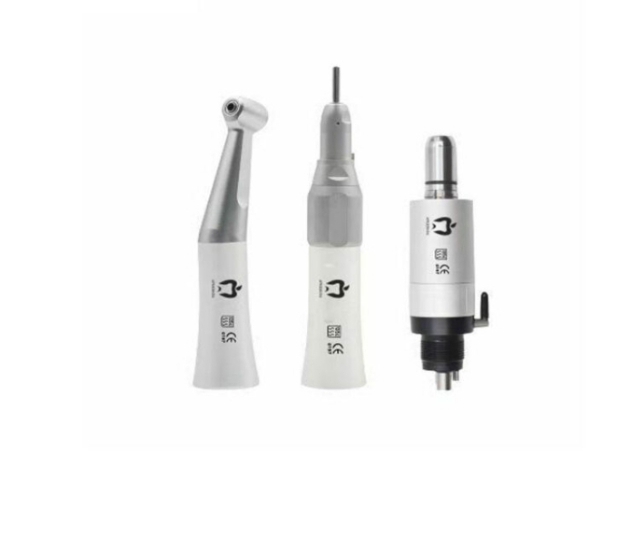In the rapidly advancing world of healthcare, dental clinics are evolving faster than ever. With innovations in technology, patient expectations rising, and dental procedures becoming more precise and less invasive, the tools used by dental professionals must keep pace. Equipping a modern dental clinic with the right instruments is not just a matter of convenience; it’s essential for effective diagnosis, efficient treatment, and exceptional patient care.This comprehensive guide explores the top 10 must-have dental equipment every modern clinic needs in 2025, shedding light on their functions, benefits, and how they enhance the overall dental practice.
Dental instruments and tools are essential for diagnosing, treating, and preventing oral health issues. Dentists, hygienists, and assistants rely on a wide range of specialized equipment.
1. Digital Radiography (Digital X-Ray Systems)
Traditional film X-rays are increasingly being replaced by digital radiography systems due to their speed, lower radiation exposure, and superior image quality.Provides instant imaging results.Reduces radiation by up to 80% compared to conventional X-rays.Images can be stored digitally and shared easily with patients or other professionals.Enhances diagnostic accuracy with high-resolution images.Digital X-ray systems streamline workflows, aid in early diagnosis of dental conditions, and help gain patient trust through quick and clear visual explanations.
2. Intraoral Camera
An intraoral camera is a small, pen-like device with a camera on the tip that provides a clear view of the mouth’s interior.Enhances patient education and involvement.Improves documentation and diagnosis.Offers real-time imaging for better treatment planning.Helps detect hidden dental problems such as fractures, caries, and plaque.Patients can see what the dentist sees, leading to better communication, understanding, and trust, which ultimately enhances treatment acceptance rates.
3. Dental Chair with Advanced Features
The dental chair is the centerpiece of any clinic. In 2025, chairs come with integrated tech like touch panels, built-in LED lighting, and ergonomic designs.Offers maximum comfort to both patient and dentist.Integrated control systems improve workflow.Customizable settings for various treatments.
Built-in hygiene systems enhance infection control.Advanced chairs improve efficiency, support a variety of procedures, and leave a strong impression on patients regarding the clinic’s professionalism.
4. CAD/CAM Systems (Computer-Aided Design and Manufacturing)
CAD/CAM technology allows dentists to design and manufacture dental restorations like crowns and veneers right in the clinic.Enables same-day restorations.High precision reduces the need for adjustments.Enhances patient convenience and satisfaction.Reduces lab costs and turnaround time.By offering same-day restorations, clinics can improve productivity, reduce follow-ups, and create a high-tech, patient-friendly environment.
5. Dental Lasers
Dental lasers are used for both hard and soft tissue procedures. They offer a minimally invasive alternative to traditional tools.Less pain and bleeding for patients.Promotes faster healing.Reduces the need for anesthesia.Ideal for procedures like gum reshaping, cavity treatment, and teeth whitening.Laser dentistry increases treatment precision and patient comfort, which can lead to higher patient retention and positive word-of-mouth.
Wait: Modern dental equipment allows dentists to perform more accurate, pain-free, and efficient procedures.
6. Sterilization Equipment (Autoclaves and Ultrasonic Cleaners)
Sterilization units ensure all instruments are free from contaminants, which is vital for patient safety and regulatory compliance.Guarantees hygiene and infection control.High-speed autoclaves reduce downtime.Ultrasonic cleaners remove debris prior to sterilization.Meets global health and safety standards.Reliable sterilization builds patient confidence and protects both patients and staff from cross-contamination and infections.
7. Cone Beam Computed Tomography (CBCT) Scanner
CBCT scanners provide 3D imaging, giving dentists detailed views of the mouth, jaw, and skull for complex procedures.Essential for implant planning and orthodontics.Offers precise, comprehensive diagnostics.Enhances safety and surgical outcomes.Provides superior visualization compared to 2D X-rays.CBCT imaging positions a clinic as technologically advanced and improves diagnosis and treatment success rates in specialized dental fields.
8. Electric Handpieces
Unlike traditional air-driven handpieces, electric handpieces offer consistent torque and speed for a wide variety of dental procedures.Offers quieter operation.Delivers better control and cutting precision.Reduces patient discomfort.Improves dentist comfort due to lower vibration.With improved efficiency and accuracy, electric handpieces are becoming the new standard in modern dental clinics.
9. Dental Practice Management Software
Managing a clinic goes beyond treatment. Dental software manages appointments, billing, patient records, and inventory.Simplifies appointment scheduling and patient communication.
Integrates with imaging and billing systems.Enables paperless documentation.Enhances data security and efficiency.An efficient software system streamlines administrative tasks, reduces errors, and allows the dental team to focus more on patient care.
10. Teeth Whitening Systems
Professional teeth whitening systems remain one of the most in-demand cosmetic dental treatments.High profitability with minimal time investment.Non-invasive procedure with visible results.Attracts new patients seeking aesthetic improvements.Systems with LED and laser tech offer faster, safer results.Offering in-office whitening can serve as a gateway service to attract patients and introduce them to other treatments.
Conclusion
The landscape of dentistry in 2025 demands a shift toward smarter, faster, and more patient-centric technologies. Investing in the right equipment is more than a matter of convenience—it’s essential for staying competitive, meeting patient expectations, and delivering top-quality care.From digital radiography and intraoral cameras to CAD/CAM systems and CBCT scanners, each piece of equipment plays a vital role in transforming a regular dental practice into a state-of-the-art clinic. Moreover, advanced sterilization methods, ergonomic dental chairs, and robust software systems ensure that the clinic runs smoothly and safely.
